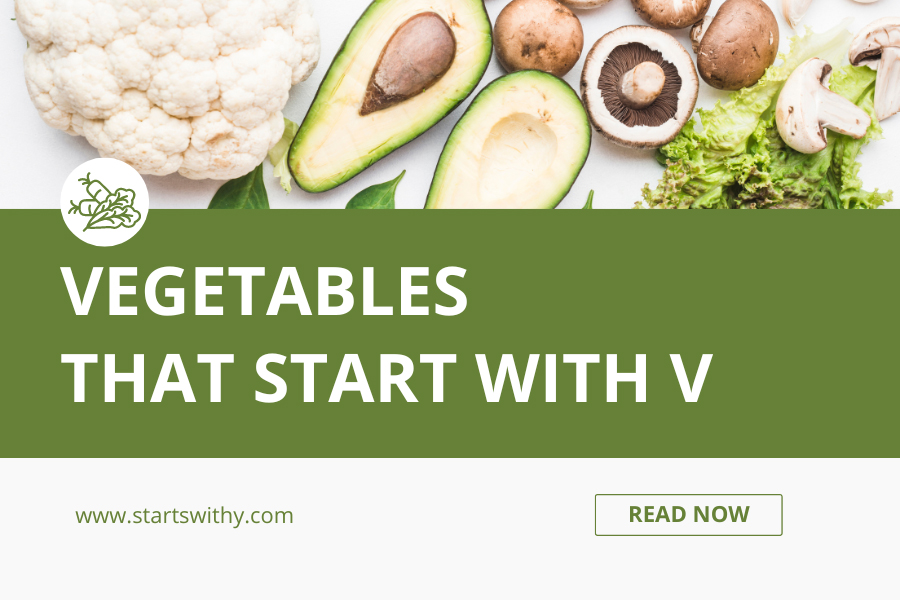The vast kaleidoscope of vegetables spans from the frequently familiar to the yonder and sometimes mystifying. When we yearn to uncover the layers represented by the letter ‘Y’, we find ourselves in a niche yet noteworthy nook of the vegetable vault. The ‘Y’ section might be succinct, but it yields a fascinating blend of tastes, traditions, and tales from around the globe.
This article sets out to guide readers through the yard of ‘Y’-initiated vegetables, touching upon their culinary significance, the myriad of health benefits they proffer, and the historical tapestry from which they’ve emerged. Whether you’re a gourmet gastronome, a health-conscious individual, or someone simply yearning for fresh insights, let’s embark on this yummy journey, exploring the distinctive vegetables that are yoked to the letter “Y”.
Vegetables That Start With The Letter Y
While the English alphabet provides a broad range of letters under which numerous vegetables fall, there are some letters that house only a select few. One such letter is “Y”. Though there aren’t as many vegetables beginning with this letter compared to some of its counterparts, what it lacks in quantity, it more than makes up for in quality and diversity. This article will embark on a journey to explore the delectable and nutritious vegetables that start with the letter “Y”.
1. Yams (Dioscorea species)
Overview: Not to be confused with sweet potatoes, yams are a type of tuber native to Africa and Asia. There are hundreds of varieties, with their skin color ranging from dark brown to light pink, and their flesh varying from white to yellow to purple.
Flavor & Texture: Depending on the variety, yams can have a starchy, neutral flavor or a sweet taste. They possess a dense texture.
Nutritional Value: Yams are a great source of fiber, vitamin C, potassium, and manganese. They also contain a unique compound called diosgenin, which has certain medicinal properties.
Culinary Uses: They can be roasted, boiled, fried, or mashed. In Africa, they are often pounded to make a dish called “fufu.”

2. Yardlong Bean (Vigna unguiculata subsp. sesquipedalis)
Overview: Also known as the Chinese long bean, this vegetable belongs to the same family as black-eyed peas. It gets its name from its impressive length, often reaching up to a yard, though they are typically harvested at 18 inches or shorter.
Flavor & Texture: It tastes somewhat like a green bean, but with a denser texture and slightly sweeter flavor.
Nutritional Value: These beans are a good source of protein, vitamin A, thiamin, riboflavin, iron, phosphorus, and magnesium.
Culinary Uses: They can be chopped and added to stir-fries, curries, or salads. They can also be deep-fried as a crunchy snack.
3. Yucca (Cassava)
Overview: Yucca, commonly known as cassava, is a starchy tuber native to South America. It is a staple in many tropical countries.
Flavor & Texture: Yucca has a starchy taste, akin to potatoes, with a fibrous texture.
Nutritional Value: It is an excellent carbohydrate source and provides essential nutrients like vitamin C, thiamin, riboflavin, and niacin. It’s also gluten-free, making it a go-to for many with gluten intolerances.
Culinary Uses: After peeling and boiling, it can be mashed or fried. It is also dried and powdered to produce tapioca. Note: Yucca should be cooked properly before consumption, as it contains naturally occurring cyanogenic glycosides which can be toxic.

4. Yu Choy (Brassica rapa subsp. parachinensis)
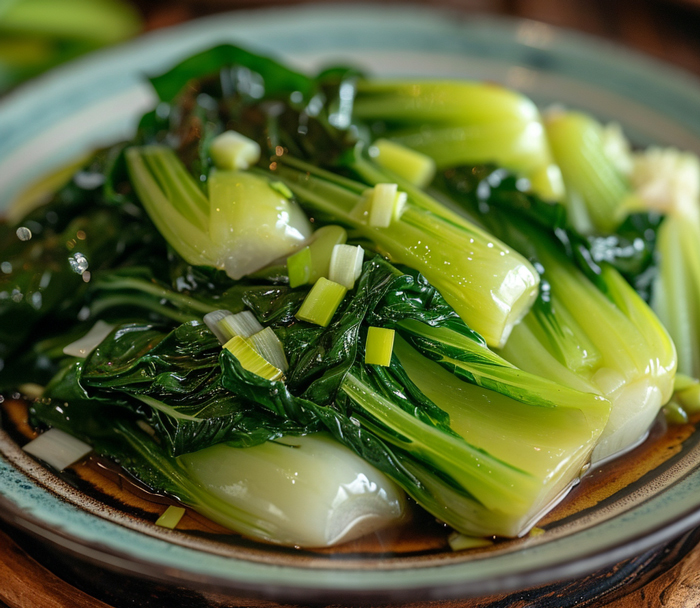
Overview: Sometimes called yu choy sum, this leafy vegetable is a popular staple in Chinese cuisine.
Flavor & Texture: It has a slightly mustardy taste but is milder and sweeter than some other Asian greens. The stems are crunchy, and the leaves are tender.
Nutritional Value: It’s rich in vitamins A, C, and K, and also provides a good amount of dietary fiber.
Culinary Uses: Yu choy can be stir-fried, steamed, or added to soups. It pairs well with garlic and oyster sauce.
5. Yacon

Imagine a vegetable that tastes like a mix of watermelon, apple, and pear, with a crunchy texture like jicama. That’s yacon, a hidden gem from the Andes mountains of South America! This unique tuber belongs to the sunflower family and has been a cherished source of food and medicine for indigenous communities for centuries.
Yacon thrives in cool climates and its long, brown roots can reach up to 10 inches in length. Inside, the flesh is white and juicy, boasting a naturally sweet taste thanks to a special type of sugar called inulin. Inulin isn’t fully digested by our bodies, making yacon a low-calorie treat with impressive health benefits. It’s known to promote gut health, regulate blood sugar, and even aid in weight management.
This versatile veggie can be enjoyed raw, roasted, or pickled. Add yacon slices to salads for a refreshing sweetness, bake them into chips for a healthy snack, or blend them into smoothies for a gut-friendly boost. With its unique flavor and potential health benefits, yacon is definitely a vegetable worth exploring!
6. Yam Bean
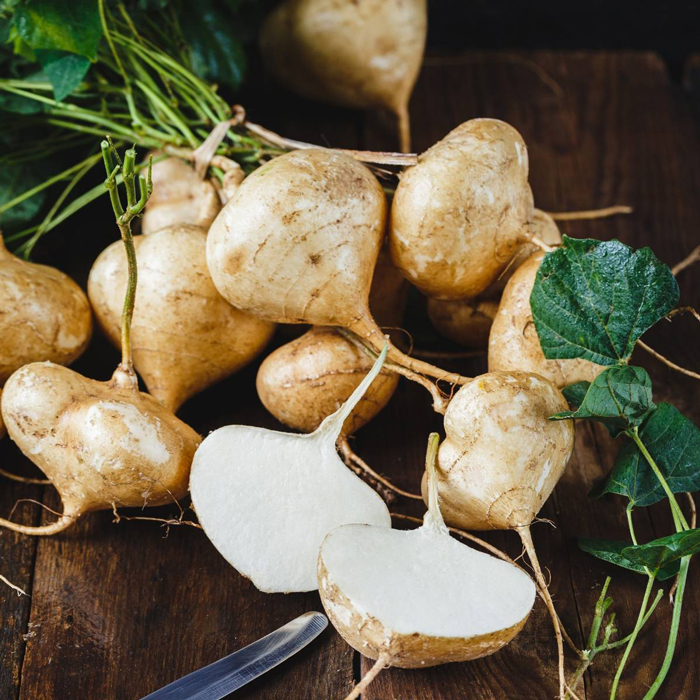
Don’t let the name fool you, the yam bean isn’t actually a yam! This fascinating vegetable belongs to the legume family and boasts a network of fleshy, potato-like tubers underground. Originating in Southeast Asia, yam beans have become a popular crop in tropical and subtropical regions around the world.
These knobby tubers can grow up to 6 inches long and come in various colors, ranging from cream to purple. They have a mild, slightly sweet flavor and a starchy texture, making them versatile kitchen companions. In some cultures, the young leaves and shoots are also enjoyed as greens, adding a nutty flavor to stir-fries and soups.
But yam beans offer more than just deliciousness! The tubers are a good source of fiber, vitamins, and minerals like potassium and phosphorus. They’re also relatively low in calories and fat, making them a healthy addition to any diet. Plus, their nitrogen-fixing properties make them excellent companion plants in home gardens, improving soil fertility for other crops.
7. Yao Choy

Have you ever seen bok choy’s miniature cousin? That’s yao choy, a petite but powerful Chinese vegetable! This leafy green belongs to the mustard family and is prized for its delicate flavor and tender texture. Yao choy typically grows only 4 to 6 inches tall, with elongated, spoon-shaped leaves and slender stems.
Despite its small size, yao choy packs a flavorful punch. It has a mild, slightly peppery taste with a hint of bitterness, similar to baby spinach or arugula. This versatility makes it a popular ingredient in stir-fries, soups, and dumplings. Its quick cooking time also makes it a convenient choice for busy kitchens.
Beyond its culinary appeal, yao choy boasts impressive nutritional value. It’s a good source of vitamins A and C, as well as folate and potassium. Additionally, its leaves contain antioxidants and anti-inflammatory compounds, making it a healthy choice for a well-balanced diet.
8. Yarrow

Forget daisies, yarrow is the wildflower you want in your backyard – and on your plate! This hardy perennial, also known as milfoil, thrives in sunny meadows and boasts clusters of tiny white, yellow, or pink blooms atop feathery foliage. But yarrow’s beauty goes beyond the garden, earning it a place in kitchens and medicine cabinets for centuries.
Young yarrow leaves and flower buds offer a surprisingly bright, peppery bite, perfect for adding zing to salads or dips. Older leaves can be a bit bitter, but simmered in soups or stews, they release a subtle aroma, reminiscent of chamomile. Don’t let its delicate appearance fool you, yarrow packs a nutritional punch – rich in vitamins A and C, and potassium.
Beyond the culinary, yarrow’s history as a medicinal herb is impressive. From ancient Greeks to Native Americans, its leaves and flowers were used to treat wounds, soothe fevers, and even ease stomach aches. Recent scientific studies have shown potential anti-inflammatory and blood-clotting properties, making yarrow a fascinating subject for modern research. So, next time you see this cheerful wildflower, remember, it’s more than just a pretty face – it’s a tasty treat and a potential cure-all waiting to be explored.
9. Yellow Turnip
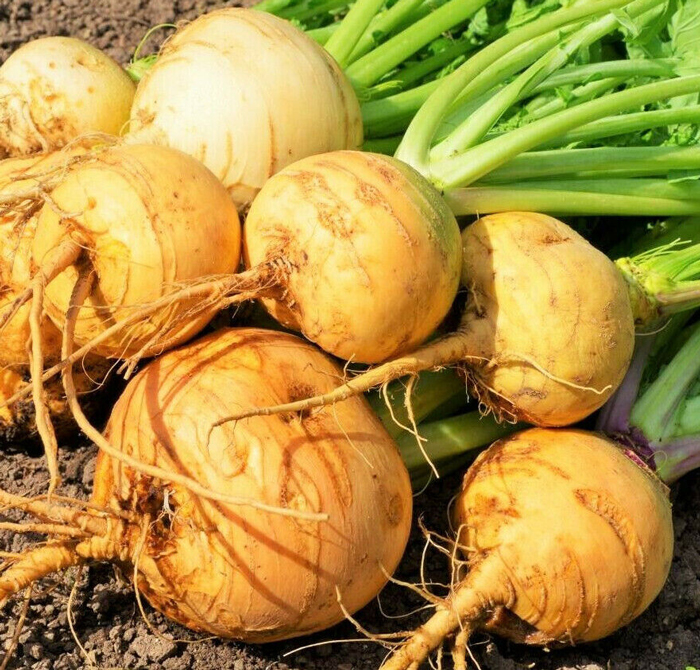
Move over orange, there’s a new sunbeam on the veggie block! The yellow turnip, cousin to the classic orange variety, brings a golden glow to your meals and a surprising burst of flavor. These cheerful root vegetables can be round or oblong, reaching up to 3 inches in diameter, and their bright yellow flesh adds a pop of color to any dish.
Yellow turnips offer a sweeter, milder taste than their orange counterparts, with a hint of honey and earthiness. This versatile veggie loves to be roasted, revealing its caramelized sweetness, or grated into salads for a refreshing crunch. They’re also delicious mashed, pureed into soups, or even thinly sliced and eaten raw with a sprinkle of salt for a healthy snack.
Don’t underestimate this sunshine-hued treasure. Yellow turnips are low in calories and fat, but high in vitamins C and K, as well as fiber and important minerals like potassium and manganese. This nutritional powerhouse can help regulate blood sugar, boost immunity, and support healthy digestion. So, ditch the boring white potatoes and embrace the sunny taste and health benefits of the yellow turnip!
10. Yucca Root
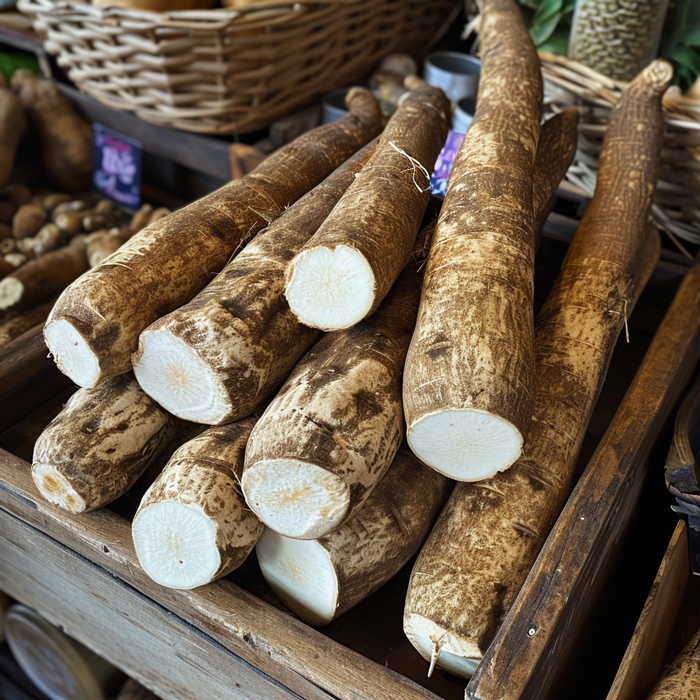
Forget trendy superfoods, yucca root has been nourishing Mesoamerican communities for centuries! This starchy, woody root vegetable, also known as cassava, is a staple food in tropical and subtropical regions, providing sustenance and resilience to local populations. But for curious cooks everywhere, yucca offers a unique culinary adventure.
Yucca roots can grow up to 2 feet long and weigh several pounds, with a rough, brown exterior and a creamy white flesh. Once peeled and cooked, their texture transforms, becoming light and fluffy, almost like mashed potatoes. The taste is mild and slightly sweet, making it a blank canvas for various seasonings and flavors. Yucca can be roasted, boiled, fried, and even grated into flour for gluten-free baking.
This ancient food packs a modern nutritional punch. Yucca is an excellent source of carbohydrates, offering sustained energy, and is also rich in vitamins C, B6, and important minerals like potassium and magnesium. Plus, it’s naturally gluten-free and low in fat, making it a versatile option for various dietary needs. So, venture beyond the supermarket aisles and discover the unique taste and nutritional benefits of yucca root!
List of Vegetables Starting with Y

| Yacon | Yam | Yam Bean |
| Yao Choy | Yardlong Bean | Yarrow |
| Yautia Horqueta | Yellow Beans | Yellow Pepper |
| Yellow Squash | Yellow Turnip | Yucca Root |
| Yukon Gold Potato |
Conclusion
The letter “Y” brings forward an assortment of vegetables that are both versatile in the kitchen and valuable nutritionally. From the starchy richness of yams and yucca to the crisp freshness of yardlong beans and yu choy, there’s a world of flavors waiting to be explored. While these may not be the most common vegetables in every kitchen, integrating them into your meals can bring about a delightful change. Next time you come across these “Y” vegetables, don’t hesitate to try them out and introduce your palate to new and exciting flavors.
Vegetables That Start With
A | B | C | D | E | F | G | H | I | J | K | L | M | N | O | P | R | S | T | U | V | W | Y | Z



